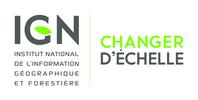|  |
|
[n° ou bulletin]
est un bulletin de Photogrammetric Engineering & Remote Sensing, PERS / American society for photogrammetry and remote sensing (1975 -) 
[n° ou bulletin]
|  |
Dépouillements

 Ajouter le résultat dans votre panier
Ajouter le résultat dans votre panierA new stereo algorithm based on snakes / E. Simioni in Photogrammetric Engineering & Remote Sensing, PERS, vol 77 n° 5 (May 2011)

Titre : A new stereo algorithm based on snakes Type de document : Article/Communication Auteurs : E. Simioni, Auteur ; G. Naletto, Auteur ; et al., Auteur Année de publication : 2011 Article en page(s) : pp 495 - 507 Note générale : Bibliographie Langues : Anglais (eng) Descripteur : [Vedettes matières IGN] Traitement d'image
[Termes IGN] appariement automatique
[Termes IGN] appariement d'images
[Termes IGN] généralisation géométrique (de visualisation)
[Termes IGN] mission spatiale
[Termes IGN] modèle numérique de terrain
[Termes IGN] modèle stéréoscopique
[Termes IGN] reconstruction d'objet
[Termes IGN] surface (géométrie)Résumé : (Auteur) As part of the ongoing activities for the European space mission BepiColombo to Mercury, a new stereo-matching algorithm is here proposed: this algorithm uses deformable surfaces, or snakes, to find a dense disparity map. Subject to both external and internal forces, respectively represented by the similarity function and by smoothness constraints on the disparity map, a "deformable" disparity map evolves from an initial approximate state to an optimal one in which the algorithm has reached convergence. This algorithm is expected to provide one of the image matching tools for the Digital Terrain Model generation procedure that will be used by the BepiColombo stereo camera. To check the algorithm, tests have been performed on synthetic images derived from 3D models of geological features relevant to planetary science. The results show that it is possible to obtain an image measurement accuracy comparable to the one attainable with the Least Squares Matching algorithm. In addition, less object smoothing can be obtained since the object points are not derived by a large scale averaging over a terrain patch, as for example, in area-based methods; this means that more details of the terrain can be captured. Finally, because of the continuity constraint, this method is also expected to be robust in case of blunders in the reconstruction of the parallax field. Numéro de notice : A2011-170 Affiliation des auteurs : non IGN Thématique : IMAGERIE Nature : Article DOI : 10.14358/PERS.77.5.495 En ligne : https://doi.org/10.14358/PERS.77.5.495 Format de la ressource électronique : URL article Permalink : https://documentation.ensg.eu/index.php?lvl=notice_display&id=30948
in Photogrammetric Engineering & Remote Sensing, PERS > vol 77 n° 5 (May 2011) . - pp 495 - 507[article]Small-footprint Lidar estimations of sagebrush canopy characteristics / J. Mitchell in Photogrammetric Engineering & Remote Sensing, PERS, vol 77 n° 5 (May 2011)

Titre : Small-footprint Lidar estimations of sagebrush canopy characteristics Type de document : Article/Communication Auteurs : J. Mitchell, Auteur ; N. Glenn, Auteur ; et al., Auteur Année de publication : 2011 Article en page(s) : pp 521 - 530 Note générale : Bibliographie Langues : Anglais (eng) Descripteur : [Vedettes matières IGN] Lasergrammétrie
[Termes IGN] arbuste
[Termes IGN] densité des points
[Termes IGN] données lidar
[Termes IGN] données maillées
[Termes IGN] hauteur de la végétation
[Termes IGN] plante herbacée
[Termes IGN] semis de pointsRésumé : (Auteur) The height and shape of shrub canopies are critical measurements for characterizing shrub steppe rangelands. Remote sensing technologies might provide an efficient method to acquire these measurements across large areas. This study compared point-cloud and rasterized lidar data to field-measured sagebrush height and shape to quantify the correlation between field-based and lidar-derived estimates. The results demonstrated that discrete return, small-footprint lidar with high point density (9.46 points/m2) can provide strong predictions of true sagebrush height (H2 of 0.84 to 0.86), but with a consistent underestimation of approximately 30 percent. Our results provided the first successful lidar-based descriptors of sagebrush shape with R2 values of 0.65, 0.74, and 0.78 for respective predictions of shortest canopy diameter, longest canopy diameter, and canopy area. Future studies can extend lidar-derived shrub height and shape measurements to canopy volume, cover, and biomass estimates. Numéro de notice : A2011-171 Affiliation des auteurs : non IGN Thématique : FORET/IMAGERIE Nature : Article DOI : 10.14358/PERS.77.5.521 En ligne : https://doi.org/10.14358/PERS.77.5.521 Format de la ressource électronique : URL article Permalink : https://documentation.ensg.eu/index.php?lvl=notice_display&id=30949
in Photogrammetric Engineering & Remote Sensing, PERS > vol 77 n° 5 (May 2011) . - pp 521 - 530[article]












